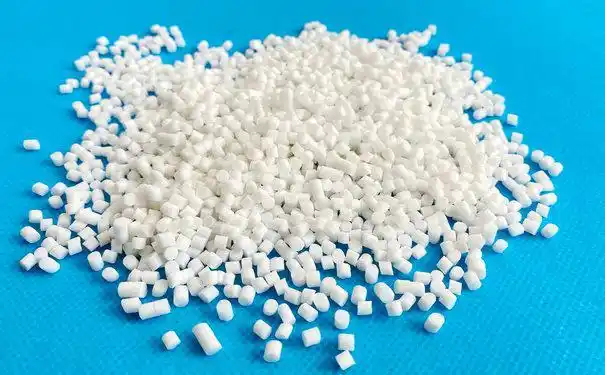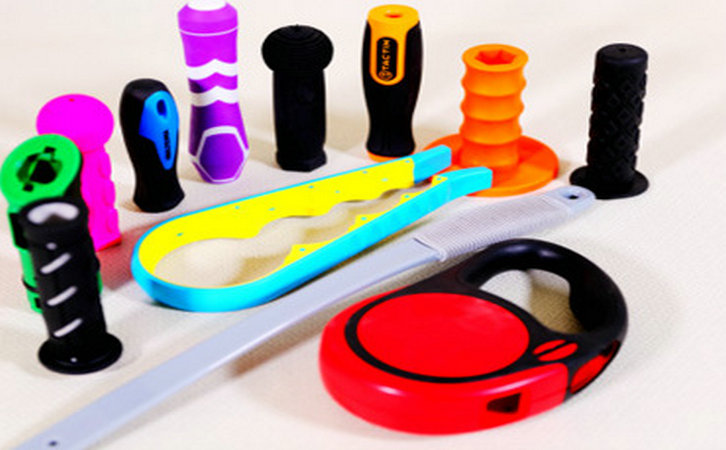As someone who’s been in the bedding industry for over 15 years, I’ve seen countless pillow materials come and go—down, memory foam, latex, you name it. But few have sparked as much curiosity as TPE (Thermoplastic Elastomer) pillows. A question I often get from clients and friends alike is whether these pillows are as soft as they’re hyped to be. The short answer? Yes, TPE pillows can be incredibly soft, but there’s more to their feel than just softness. Having tested and recommended TPE pillows for various sleep needs, I’ve learned they’re a unique blend of comfort, support, and innovation. Let me break down what makes TPE pillows feel the way they do, how their softness compares to other materials, and whether they’re the right fit for you.

What Makes TPE Pillows Special?
When I first encountered TPE pillows, I was skeptical. I’d worked with memory foam and latex for years, and both had their loyal fans. But TPE, often marketed as “gel” or “zero-pressure” material, caught my attention with its honeycomb grid structure and claims of being soft yet supportive. Unlike traditional pillows, TPE is a thermoplastic elastomer—a material that combines the elasticity of rubber with the moldability of plastic. It’s the same stuff used in baby pacifiers and medical devices, so it’s safe, non-toxic, and eco-friendly. But does that translate to a soft, cozy sleep experience? Let’s dive in.
The softness of a TPE pillow comes from its unique design. The grid-like structure allows it to compress under pressure while bouncing back quickly, giving it a plush, almost squishy feel. I remember unboxing a TPE pillow from a brand like Zeropressure for a client’s boutique hotel project. When I pressed it with my hand, it felt like a mix of memory foam’s contouring hug and latex’s springy responsiveness—but softer than both in its initial touch.
How Soft Are TPE Pillows Compared to Other Materials?
To understand TPE’s softness, it helps to compare it to other common pillow materials. Over the years, I’ve worked with clients ranging from luxury hotel owners to everyday sleepers, and I’ve seen how preferences vary. Here’s a breakdown of how TPE stacks up:
|
Material |
Softness Level |
Key Characteristics |
Best For |
|---|---|---|---|
|
TPE |
Soft to Medium |
Squishy, elastic, breathable, quick rebound |
Combo sleepers, hot sleepers |
|
Memory Foam |
Medium to Firm |
Firm initially, softens with body heat |
Side sleepers, pain relief |
|
Latex |
Medium to Soft |
Bouncy, responsive, naturally cooling |
Back sleepers, eco-conscious users |
|
Down/Down Alternative |
Very Soft |
Fluffy, moldable, less supportive |
Stomach sleepers, plush lovers |
TPE vs. Memory Foam: Memory foam starts firm and softens with body heat, creating a sinking sensation. TPE, by contrast, feels softer right away due to its elastic grid but doesn’t let your head sink too deeply. A client once described their TPE pillow as “like sleeping on a cloud that pushes back just enough.”
TPE vs. Latex: Latex is springy and slightly firmer, even in its softer variants. TPE feels plusher and more adaptable, especially for those who shift positions. I recommended a TPE pillow to a side-and-back sleeper who found latex too bouncy, and they loved the softer, more cushioned feel.
TPE vs. Down: Down pillows are the gold standard for softness, but they often lack support and flatten over time. TPE offers a similar plush feel but with better spinal alignment and durability. A colleague in the industry switched from down to TPE and was amazed at how it stayed lofty after months of use.

Factors That Affect TPE Pillow Softness
Not all TPE pillows feel the same, and I’ve learned this through testing dozens of models for clients. The softness depends on several factors:
Grid Density: The honeycomb structure varies by brand. A tighter grid (smaller holes) feels firmer, while a looser grid (larger holes) is softer. For example, the HygieneRest TPE Comfort Core Pillow has a looser grid, making it noticeably squishier than a denser model like the Purple Harmony.
Pillow Thickness (Loft): TPE pillows come in different heights, typically 4-7 inches. Lower-loft models (around 4 inches) feel softer and are better for stomach sleepers, while higher-loft ones (6-7 inches) offer more support for side sleepers. I once helped a client with neck pain choose a medium-loft TPE pillow, which felt soft but kept their spine aligned.
Core Material: Some TPE pillows, like those from Zeropressure, combine TPE with a latex or memory foam core, which can make them feel slightly firmer. Pure TPE pillows tend to be softer and more flexible.
Cover Material: The pillow cover impacts the initial feel. A soft polyester or bamboo-derived cover enhances the plushness, while a thicker cotton cover might make it feel slightly firmer. I always recommend a breathable cover to maintain TPE’s cooling properties.
Is a TPE Pillow Too Soft?
One concern I hear is whether TPE pillows are too soft, especially for those who need support. In my experience, TPE strikes a balance. Its elastic grid adapts to your head and neck, providing a soft initial feel but firming up under pressure to prevent excessive sinking. This makes it ideal for combination sleepers who switch between side, back, and stomach positions.
However, softness is subjective. A client I worked with, a side sleeper with broad shoulders, found a low-loft TPE pillow too soft because it didn’t elevate their head enough. We swapped it for a higher-loft model, and they reported better neck support without losing the plush feel. If you prefer a firmer pillow, look for a TPE model with a denser grid or a hybrid core. Brands like Spring Hometextile offer options labeled as “medium-firm” for this reason.
Benefits of TPE Pillow Softness
The softness of TPE pillows comes with practical advantages, which I’ve seen firsthand in my work:
Pressure Relief: The squishy grid conforms to your head and neck, reducing pressure points. A hotel chain I consulted for switched to TPE pillows and saw fewer guest complaints about neck stiffness.
Breathability: The hollow honeycomb design allows air to flow, keeping the pillow cool. This is a lifesaver for hot sleepers, unlike memory foam, which can trap heat.
Washability: TPE pillows are 360° washable, meaning you can clean the entire pillow with mild soap and water. I’ve advised clients to rinse their TPE pillows monthly to keep them fresh, especially in humid climates.
Hypoallergenic: TPE is dust mite-resistant and non-toxic, making it great for allergy sufferers. A family I worked with switched to TPE pillows for their kids and noticed fewer allergy flare-ups.
Durability: Unlike down pillows that flatten, TPE maintains its shape. I’ve seen TPE pillows last 3-5 years with proper care, outlasting many memory foam models.

Drawbacks to Consider
No pillow is perfect, and TPE has its quirks. From my experience, here are some potential downsides:
Weight: TPE pillows are heavier than down or latex, often weighing 3-5 pounds. This can feel cumbersome if you reposition your pillow at night.
Heat Sensitivity: TPE can soften or deform above 60°C (140°F), so avoid leaving it near heaters or in hot cars. I once had a client ruin a TPE pillow by drying it on high heat.
Initial Odor: Some TPE pillows have a mild chemical smell when new, though it dissipates within a week. Airing it out or using a baking soda sprinkle helps, as I advised a client who was sensitive to odors.
Not for Everyone: If you love ultra-firm pillows, TPE’s softness might feel insufficient. A back sleeper I worked with preferred a solid memory foam pillow for its firmness over a TPE model.
How to Choose the Right TPE Pillow for Your Softness Preference
To find a TPE pillow that matches your desired softness, consider these tips based on my years of helping clients:
Sleeping Position:
Stomach Sleepers: Opt for a low-loft (4-5 inches) TPE pillow to avoid neck strain. The HygieneRest TPE Pectin Comfort Pillow is a good example, with its soft, squishy feel.
Back Sleepers: A medium-loft (5-6 inches) pillow offers a balance of softness and support. The Zeropressure TPE Pillow worked well for a client who needed gentle cushioning without sinking too much.
Side Sleepers: Choose a high-loft (6-7 inches) or medium-firm TPE pillow to keep your spine aligned. The Purple Harmony with a latex core is slightly firmer but still soft.
Trial Period: Look for brands with a 30-100 night trial, like Coop Sleep Goods or Casper, to test the softness at home.
Brand Research: Compare models from reputable brands like Zeropressure, Spring Hometextile, or HygieneRest. Check reviews for comments on softness and grid density.
Care Instructions: To maintain softness, clean with mild soap and water and avoid high heat. Regular airing keeps the pillow fresh and soft.
My Personal Take
A few years ago, I helped a small bed-and-breakfast outfit their rooms with TPE pillows after guests complained about flat, overheated memory foam pillows. We chose a medium-loft TPE model with a loose grid for a soft, breathable feel. The feedback was overwhelmingly positive—guests loved the plush comfort and coolness, and the owner appreciated the easy maintenance. One guest even bought a pillow to take home! That experience sold me on TPE’s ability to deliver softness without sacrificing support. Since then, I’ve recommended TPE pillows to everyone from athletes with neck pain to parents looking for hypoallergenic options for their kids.

Final Thoughts
TPE pillows are indeed soft, often feeling like a plush, elastic cloud that adapts to your head and neck. Their honeycomb grid gives them a unique squishiness that’s softer than memory foam or latex but more supportive than down. However, softness varies by grid density, loft, and core material, so you’ll need to match the pillow to your sleeping position and preferences. With benefits like breathability, washability, and hypoallergenic properties, TPE pillows are a fantastic choice for many sleepers. Just be mindful of their weight and heat sensitivity. If you’re looking for a pillow that feels luxurious yet practical, TPE might just be your dream match.
Related Questions and Answers
Q: Are TPE pillows good for hot sleepers?
A: Yes, TPE pillows are excellent for hot sleepers. Their honeycomb grid allows air to flow, preventing heat buildup. Unlike memory foam, which can trap heat, TPE stays cool all night.
Q: Can I wash a TPE pillow like a regular pillow?
A: TPE pillows are 360° washable with mild soap and water, but don’t put them in a washing machine or dryer, as high heat can damage the material. Gently wipe or rinse and air dry.
Q: Are TPE pillows too soft for side sleepers?
A: Not necessarily. Choose a high-loft (6-7 inches) or medium-firm TPE pillow for better support. Models with a denser grid or hybrid core provide enough firmness to keep your spine aligned.
Q: How long do TPE pillows last?
A: With proper care, TPE pillows can last 3-5 years. Their durable, elastic structure resists flattening, unlike down or low-quality memory foam. Regular cleaning and avoiding high heat extend their lifespan.





